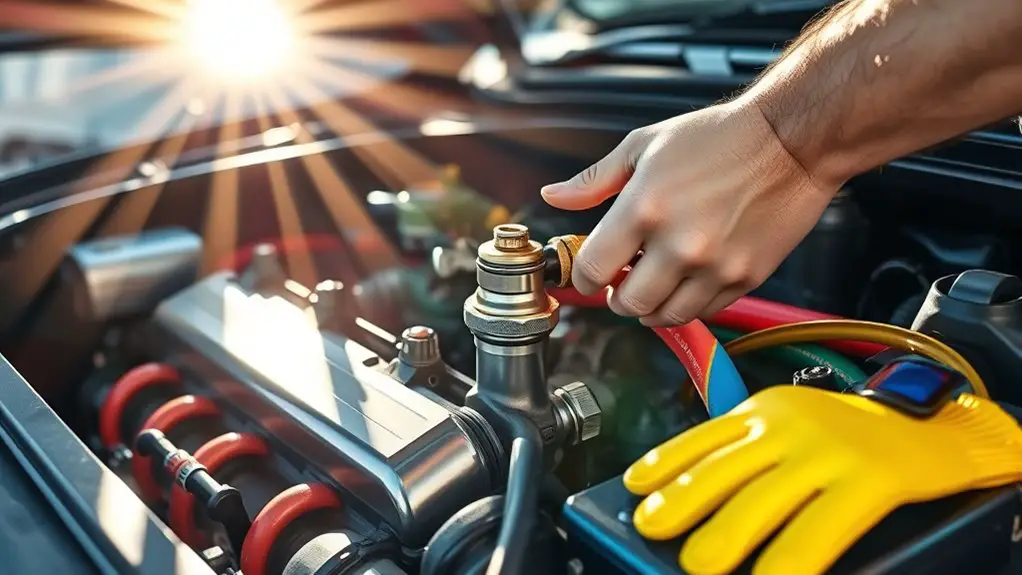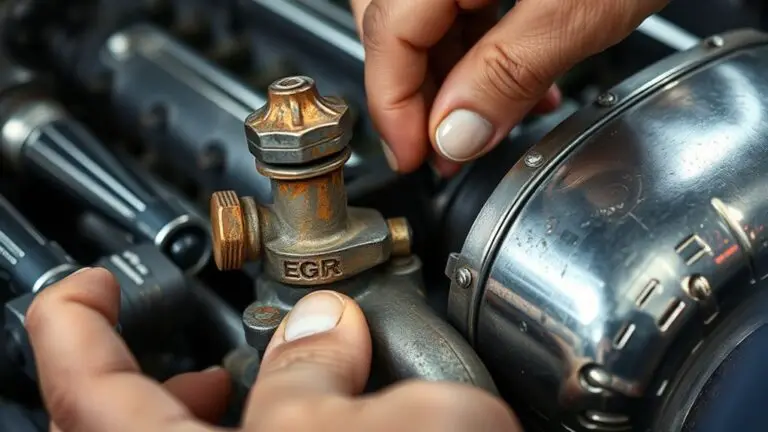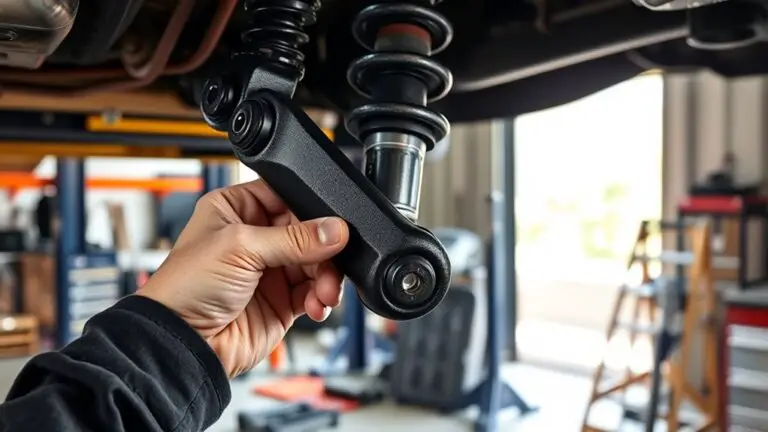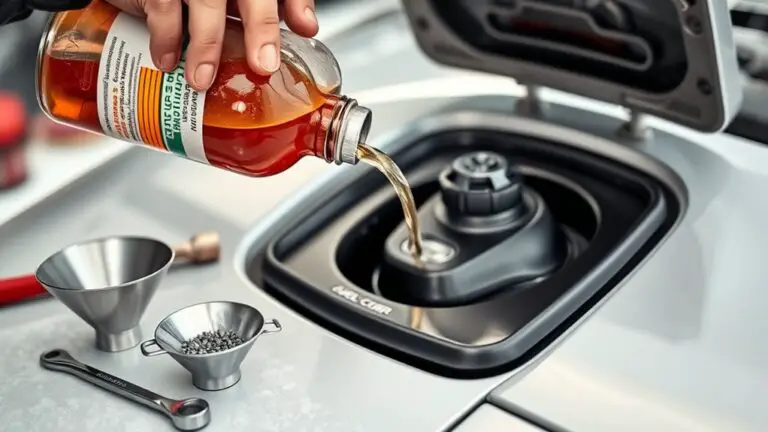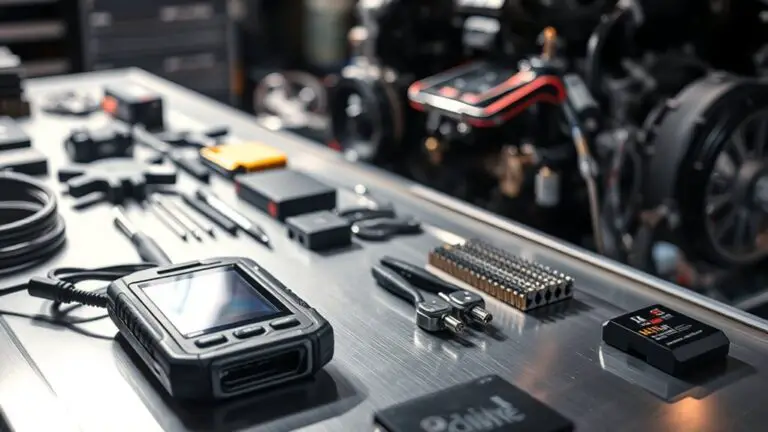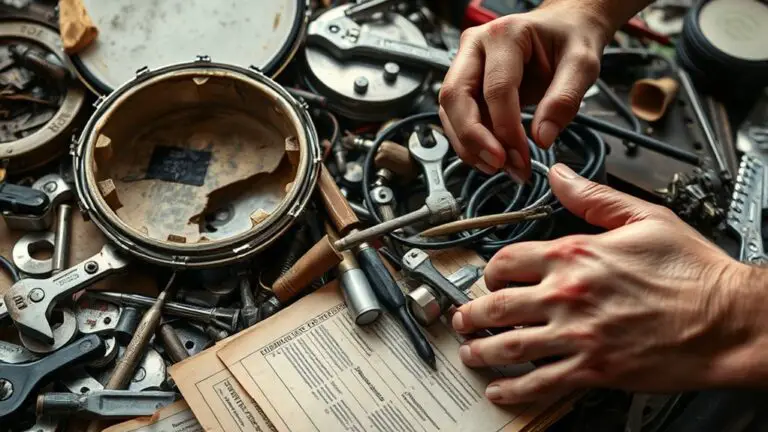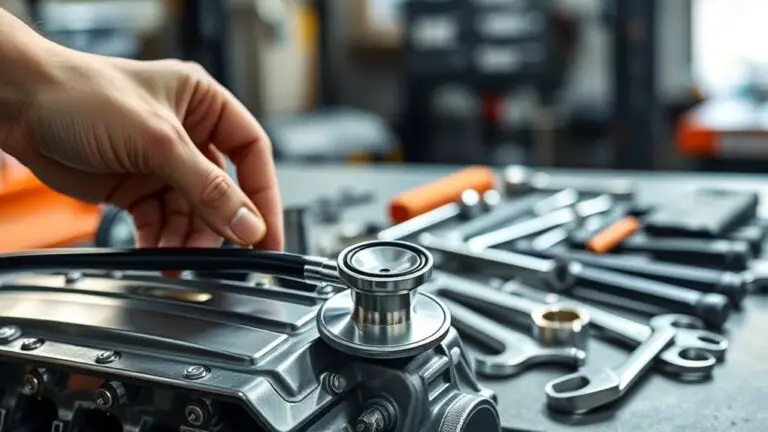Safety Tips When Working on Expansion Valve
Before you service an expansion valve, guarantee PPE compliance and a clean work area. Confirm fit and use eye protection, gloves, and hearing protection based on risk, and inspect gear daily. Use lockout/tagout to isolate power and depressurize the system, then verify de-energization before touching any components. Handle refrigerants with labeled containers, monitor for leaks, and recover refrigerants with certified equipment. Maintain clear markings on electrical connections, test instruments compatibility, and expect a thorough checklist—more tips await if you continue.
Personal Protective Equipment and PPE Compliance

Personal protective equipment (PPE) is your first line of defense when working on expansion valves. You’ll approach each task with deliberate care, planning your PPE before you touch a valve. Start by confirming PPE guidelines are current, then verify that each item fits properly and feels comfortable enough to wear for the duration of the job. Eye protection, gloves, and hearing protection should be chosen for the specific risk profile, and respirators or face shields must meet applicable standards when fumes or particulates are possible. PPE inspections are not optional; they’re your daily habit. Inspect for tears, cracks, and functional fasteners, replacing damaged components immediately. Keep a clean, organized work area so PPE remains uncontaminated and accessible. Maintain a routine: don, verify, and document each item’s condition, then proceed. Your freedom to work safely depends on disciplined PPE use and strict adherence to guidelines.
Lockout/Tagout Procedures for Valve Service
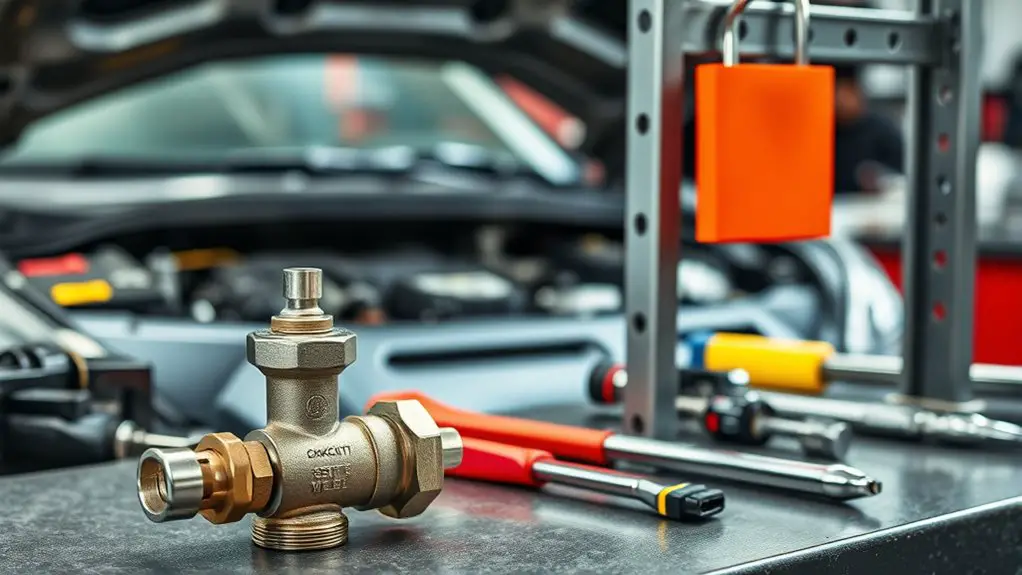
You’ll start with Lockout/Tagout Basics to prevent unexpected energization, then confirm Valve Isolation Steps before any work begins. Follow Service Authorization Rules to guarantee only trained personnel perform maintenance and to verify all permits are current. This first discussion sets the foundation for safe valve service by detailing these controls and their proper sequence.
Lockout/Tagout Basics
Lockout/tagout (LOTO) basics are essential for valve service to prevent unexpected energization during maintenance. You’ll follow a disciplined sequence to protect yourself and others, using lockout devices and tagout procedures to control energy sources.
1) Identify all energy sources powering the valve and related equipment.
2) Apply lockout devices to isolating points, then attach clear tags indicating status and authorized personnel.
3) Verify de-energization by testing circuits and pressure pathways, ensuring zero energy state before work begins.
4) Restore equipment only after removing tags and devices in the opposite order, confirming system readiness and recording the task.
Keep records accessible and review procedures regularly to maintain readiness, safety, and freedom to perform with confidence.
Valve Isolation Steps
Before you begin valve work, isolate the valve and all related energy sources using established lockout/tagout procedures. You’ll verify deenergization, depressurization, and isolation from power, fluid, and control lines, then apply appropriate tags and locks. Document each step so colleagues understand the current status and responsibilities. With the valve secured, perform a careful wait-for-energy check and test the isolation using calibrated instruments. Proceed only when readings confirm zero energy and no residual pressure. During valve maintenance, maintain a strict boundary between work area and live systems. Maintain clear, purposeful communication with team members about your progress, intended actions, and completion. This discipline supports accurate system diagnostics and sustained valve maintenance while preserving safety and freedom in the workflow.
Service Authorization Rules
Establish who is authorized to perform valve service and what authorization is required before any work begins, ensuring each person understands their roles and responsibilities under the lockout/tagout program. You’ll follow strict service protocols to prevent unexpected valve movement and energy release, meeting regulatory compliance at every step. With clear authorizations, каждый participant knows tasks, limits, and escalation paths, reducing risk and ambiguity.
- Verify written authorization and crew roles before any maintenance.
- Apply LOTO devices and tags, confirming energy isolation and tag visibility.
- Conduct a joint zero-energy verification and brief the team.
- Maintain continuous documentation, audits, and post-work sign-off for compliance.
ATP and Pressure Testing Safety Practices
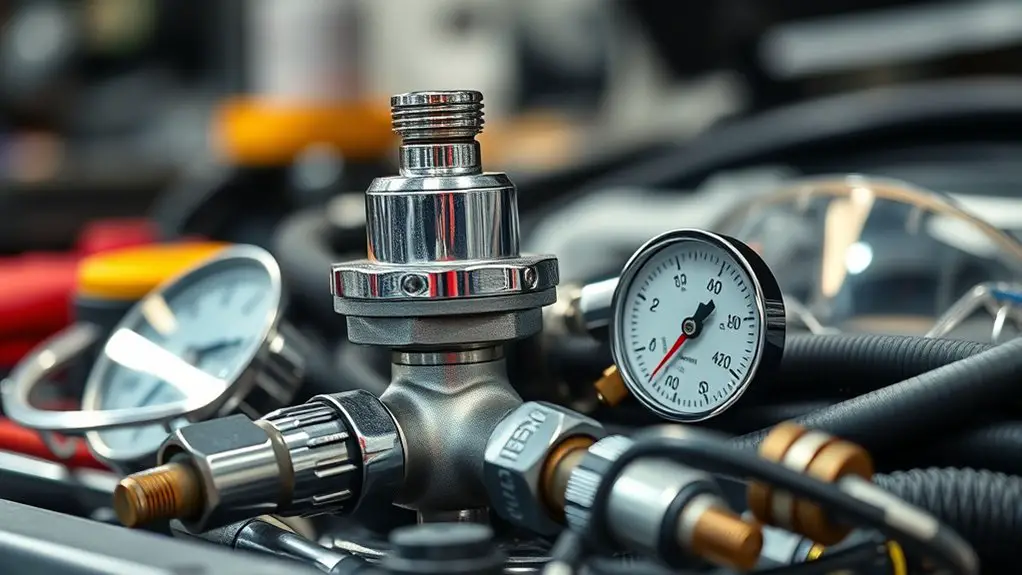
ATP and pressure testing involve multiple safety steps that must be followed meticulously to prevent injury or equipment damage. You’ll verify that testing equipment is calibrated, leak-free, and rated for the system’s pressures before any action. Prepare a controlled workspace, wear PPE, and isolate energy sources. Follow manufacturer instructions for pressure calibration, use rated gauges, and document readings. Establish baseline procedures, test in increments, and monitor for sudden pressure changes. If any anomaly occurs, stop, depressurize safely, and recheck connections. Never bypass safety features or improvised fittings. Use secure mounting for hoses and adapters; keep clear of moving components. Maintain calm, measured progress; methodical execution reduces risk.
| Step | Action | Outcome |
|---|---|---|
| 1 | Inspect testing equipment | Verify integrity and calibration |
| 2 | Secure connections | Prevent leaks and misreads |
| 3 | Conduct test increments | Detect issues early |
| 4 | Record results | Guarantee traceability and accountability |
Handling and Storage of Refrigerants Safely
Handling and storage of refrigerants safely builds on proper safety practices from pressure testing by focusing on containment and responsibility. You approach this with discipline, ensuring you know each refrigerant type you’re handling and its specific storage needs, while avoiding cross-contamination and leaks. Maintain clearly labeled, dedicated storage containers designed for refrigerants, and keep caps sealed when not in use. Regularly inspect containers for corrosion, dents, or compromised fittings, and replace damaged units promptly. Ventilation is essential; store away from heat sources and incompatible materials.
- Identify refrigerant types before handling and confirm compatibility with your storage containers.
- Seal and label all containers, tracking batch numbers and pressures.
- Maintain organized, ventilated storage areas with restricted access.
- Establish a response plan for leaks, with immediate containment and notification steps.
Tools, Equipment, and Safe Handling Techniques
You should start with the right PPE, selecting eye, face, hand, and respiratory protection appropriate to the materials and task. Handle and store tools and equipment carefully, inspecting for damage and verifying calibration or labeling before use. Follow safe handling techniques to prevent leaks, spills, or exposure, and keep all components organized for quick, safe access.
Proper PPE Use
Personal protective equipment (PPE) is the first line of defense when working with expansion valves, and selecting the right gear is crucial for safe handling and tool use.
- PPE selection guidelines: choose impact-resistant eyewear, gloves rated for chemical exposure, and a flame-resistant coverall or apron as dictated by task risk.
- PPE maintenance practices: inspect before use, clean after exposure, and replace worn components promptly to maintain integrity.
- Fit and comfort: verify proper sizing, adjust respirators or masks for a secure seal, and balance protection with mobility.
- Documentation and team routine: log inspections, replacements, and trainings to reinforce consistent safety habits and accountability.
Handling and Storage
When working with expansion valves, proper handling and storage of tools and equipment are essential to prevent damage and injuries. You should inspect each tool before use, keeping sharp edges guarded and containers closed. Label storage areas clearly and separate delicate components from heavy, reactive materials. Use capped, leak‑tight containers for refrigerants and related media, and verify compatibility with your equipment. Maintain a clean workspace, free from clutter, with designated zones for installation, testing, and transport. Handle valves and fittings with steady hands, avoiding drops or impacts. Store expansion valve storage components in a dry, climate‑controlled area, away from heat sources. Follow refrigerant handling guidelines strictly, including proper recovery and disposal procedures, to minimize environmental and personal risk.
Leak Detection and Refrigerant Recovery Protocols
Leak detection and refrigerant recovery are essential during expansion valve work to protect personnel and the environment. You’ll approach this with discipline, verifying procedures before touching valves, and using approved equipment for leak detection and recovery.
1) Use calibrated leak detectors and verify sensor function prior to testing.
2) Seal and label all test ports, and document any detected leaks with location and magnitude.
3) Perform refrigerant recovery only with a certified recovery machine, following the applicable rules for collection and disposal.
4) Establish a pause point: if a leak is detected beyond acceptable limits, halt work, re-evaluate the system, and reattempt only after corrective action.
Keep records, monitor pressures carefully, and replace components as needed. You’ll prioritize safety, minimize emissions, and guarantee compliance with environmental guidelines while maintaining system integrity. Leak detection and refrigerant recovery are integral to responsible expansion valve maintenance and your professional freedom.
Electrical Safety When Servicing Expansion Valves
Electrical safety during expansion valve servicing builds on the disciplined approach you use for leak detection and refrigerant recovery. You’ll respect lockout/tagout procedures and verify power isolation before working near any electrical components. Identify circuit paths and avoid contact with energized terminals; assume circuits are live until proven otherwise. Use proper PPE, insulated tools, and nonconductive footwear, and keep one hand away from grounded surfaces when testing. Confirm compatibility of test instruments with refrigeration electrical systems to prevent misreads that could lead to shocks or arcing. Maintain clear labeling on all electrical connections and secure the work area to prevent incidental contact or tool fall-ins. Address electrical hazards promptly: cover exposed conductors, terminate unused leads, and replace damaged insulation. Incorporate circuit protection upstream of control circuits and devices; verify fusing, GFCIs, and protective relays are functional before energizing. Stay deliberate, document deviations, and never rush through critical safety checks.
Post-Service Verification and Clean-Up Procedures
Post-service verification and clean-up should begin the moment the system is depressurized and the equipment is powered down; verify that all tools are accounted for, and that no refrigerant or oil residues remain in accessible areas. You approach this step with care, documenting observations, and ensuring compliance with disposal rules while preserving freedom to pursue future work confidently. Employ a calm, methodical mindset to prevent遗漏 and cross-contamination.
- Conduct a post service inspection to confirm system integrity, connections, and labeling; record any abnormalities for follow-up.
- Collect tools, PPE, and debris; verify none remain in the workspace that could cause trips or damage.
- Manage refrigerant disposal according to local regulations, using approved containers and leak-free transfer methods.
- Clean work surfaces and vents, seal openings, and restore the area to its prior condition, ready for inspection or return to service.
Frequently Asked Questions
How Does Ambient Temperature Affect Expansion Valve Safety?
Ambient temperature affects expansion valve safety by altering valve performance and system pressures you monitor. As temperatures rise, pressures can climb, increasing risk of leaks or component strain; as they drop, potential icing and restricted flow may occur. You should verify that setpoints account for ambient changes, inspect seals, and test for proper response across the expected range. Stay methodical: document conditions, avoid rapid temperature swings, and guarantee protective interlocks engage if temperatures exceed safe thresholds.
What Are Common Signs of Valve Internal Blockage?
Common signs of valve internal blockage include fluctuating pressures, reduced flow, and uneven cooling. You’ll notice occasional valve stiction, or jerky operation, and unusual temperature differentials across the valve. Look for abnormal noise or freezing downstream. In valve diagnostics, verify flow at multiple pressures and inspect for buildup. Blockage symptoms often mirror other issues, so approach methodically: confirm with measurements, then isolate the valve. If symptoms persist, consider calibration or replacement.
Can Improper Expansion Valve Settings Cause System Burnout?
Yes. Improper expansion valve settings can cause system burnout by overloading compressor, creating excessive head pressure, and reducing lubrication. You should verify valve calibration to match refrigerant and load, monitor superheat and subcooling, and adjust gradually. When calibration drifts, system efficiency suffers, and components overwork. Stay precise, cautious, and methodical, tracking readings and documenting changes. You value freedom, yet you’ll respect limits, ensuring safe operation and preserving long-term reliability of your system efficiency.
How Often Should Valves Be Replaced Due to Wear?
Valves should be replaced based on wear signs and manufacturer guidelines, not on a fixed calendar. Track valve lifespan through regular inspection, and replace if you notice leakage, stiffness, or erratic actuation. Establish a maintenance schedule that flags components nearing end-of-life. You’ll gain freedom by staying proactive, cautious, and precise, minimizing surprises. If you document your findings and follow the schedule, you’ll preserve performance and prevent unsafe failures.
What Are Emergent Steps for Valve Stuck-Open Scenarios?
In an emergent valve stuck-open scenario, immediately activate emergency procedures and isolate the affected system. Shut down power or energy sources, depressurize safely, and use lockout/tagout protocols before inspection. Notify supervisors and follow written emergency procedures. Then, assess for leaks, verify actuator function, and plan controlled reseating or valve replacement. Throughout this valve maintenance process, document actions, monitor pressures, and maintain clear communication to support safe, deliberate decision-making under pressure.

